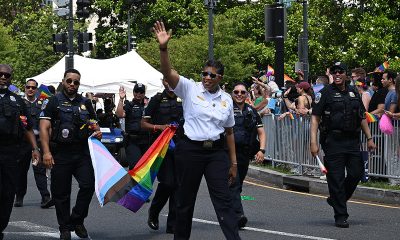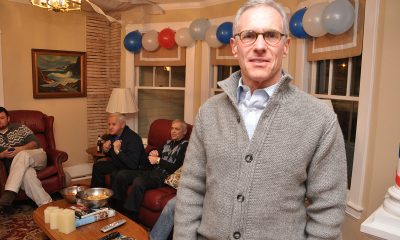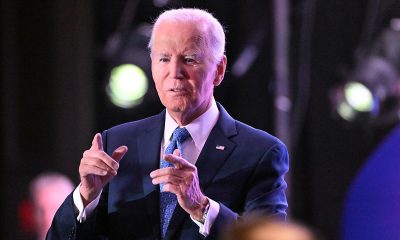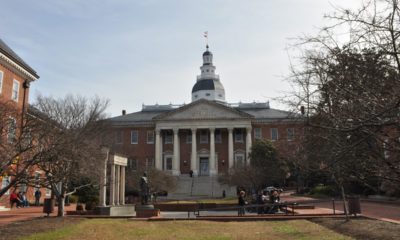a&e features
Reflecting on Capital Pride
Here’s how our celebrations evolved during ‘70s, ‘80s, ‘90s, ‘00s and ’10s
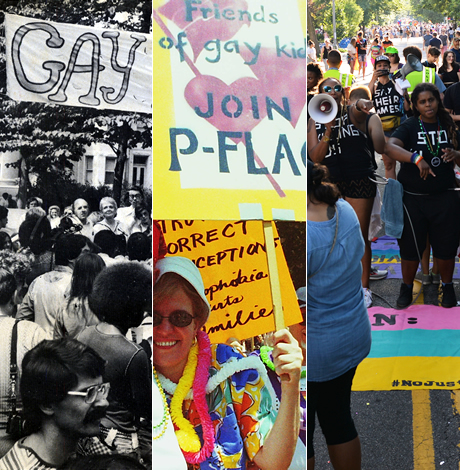
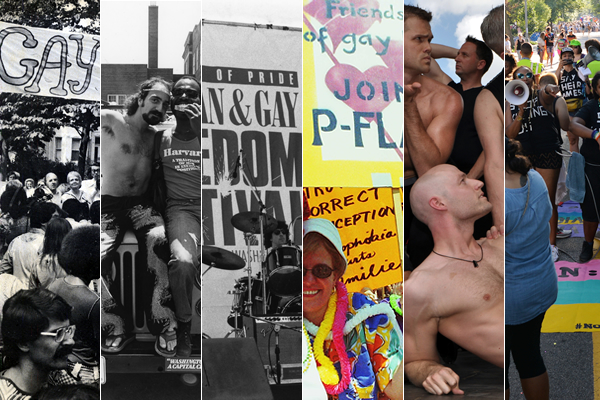
Rome wasn’t built in a day and neither was Capital Pride. Here’s some context for each decade of our local celebration.
The street party ‘70s
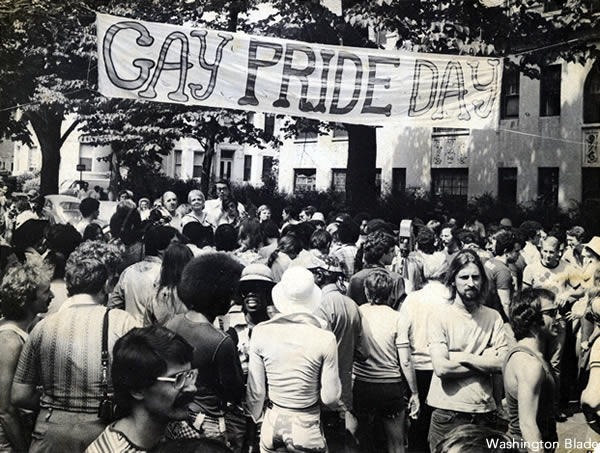
Deacon Maccubbin, owner of gay bookstore Lambda Rising (which closed in 2010), started what has become Capital Pride in 1975 with a one-day community block party on 20th St., N.W. where his store was at the time. About 2,000 attended the gathering, held on Father’s Day with a dozen booths and vendors set up. Several candidates for D.C. City Council attended as well.
In its heyday, Lambda Rising was a de facto gay community center of sorts and frequently hosted author readings/book signings and other LGBT events. Within a few years, the event was attracting about 10,000 and had spread out to three blocks.
It was a heady time for the movement. Inspired by the Stonewall Riots of 1969 in New York City, commemoration events were burgeoning around the country and Washington had a thriving gay and lesbian scene of its own (the LGBT moniker didn’t come into wide use until much later). Several local groups were well established by this time — The Academy of Washington (founded 1961), Washington Blade (founded 1969), the Gay and Lesbian Activists Alliance (then known as the GAA, founded 1971), Metropolitan Community Church of Washington (founded 1970) and others.
Early D.C. Pride events had a family-type appeal and were — as they are today — a place for various arms of the community, from drag outfits to activist groups to leather lovers and beyond, to let their gay hair down for the day. Then-Mayor Marion Barry, elected the previous November, attended his first Gay Pride Day in 1979 and continued throughout his years in office and beyond.
Ups and downs of the ‘80s
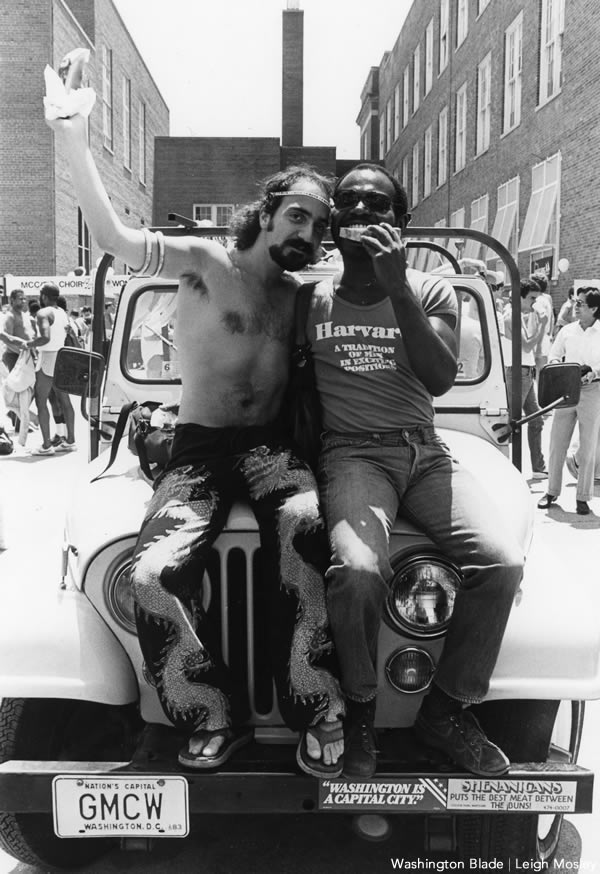
The P Street Festival Committee was formed in 1980 to take over Gay Pride Day, as the festival was known, and the annual event was held at Francis Junior High School at 24th and N streets, N.W. By the following year, the event had been dubbed Gay and Lesbian Pride Day and the first parade was held beginning on 16th St. N.W. and Meridian Hill Park and ending at Dupont Circle.
The event grew exponentially in those years from about 11,000 in 1981 to 20,000 by 1983, though it ebbed and flowed with fewer than 10,000 attending in 1986 and 1987.
Washington, like San Francisco and New York, was hit particularly hard by HIV and AIDS and the urgency and frustration of the time was well represented at the gatherings, which had expanded to a week-long event by 1984 with about 28,000 at the street festival and parade combined. The first Pride Heroes were named in 1984.
Turning tide of the 1990s
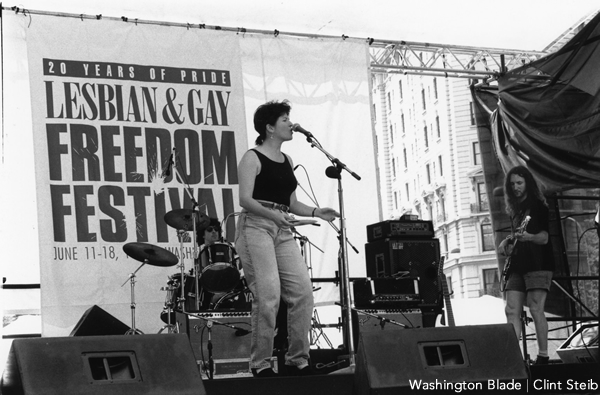
The P Street Festival disbanded in 1990 and Pride continued with a new entity, Pride of Washington. The event was also moved to the week before Father’s Day so as not to impede on the family holiday.
By 1991, the street festival had expanded to about 200 booths and for the first time, active duty and retired American military personnel marched in the parade. Rain affected attendance several years in a row and the festival flirted with bankruptcy.
In 1995, One in Ten, a D.C. organization that hosted an annual film festival, took over and moved the festival to Freedom Plaza while the parade route started at Francis Junior High School and ended at the plaza. Attendance picked up going from about 25,000 in 1994 to more than 100,000 by 1996.
In 1997, Whitman-Walker Clinic, as it was then known, joined One in Ten as a co-sponsor and the event was renamed Capital Pride. Corporate sponsorships rose dramatically going from $80,000 to nearly $250,000 the following year.
A new millennium, a new day
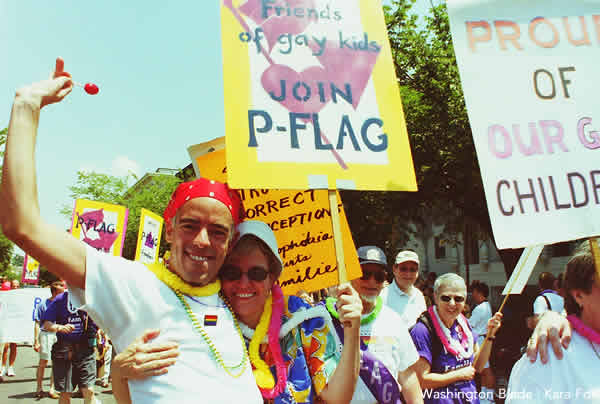
In 2000, Whitman-Walker became the sole sponsor and the festival moved again, this time to Pennsylvania Avenue, N.W. between 4th and 7th streets, N.W. and the festival’s main stage was repositioned so that the U.S. Capitol building was visible in the background.
By 2002, parade contingents reached 200 and in 2004, about 100,000 attended the various Pride events. Financial problems, however, continued to plague the event with the city agreeing in 2005 to waive thousands in street closing and police overtime fees while the Human Rights Campaign, agreed to an emergency donation of $30,000.
Attendance, however, remained strong with about 200,000 attending in 2006 making it the fourth-largest Pride event in the U.S. Several events such as dance parties, a youth prom, a transgender event, leather pride and more were now under the overall Capital Pride umbrella.
By 2007, several other local non-profits joined Whitman-Walker to form the Capital Pride Planning Committee. In March 2008, Whitman-Walker awarded the production rights to the newly formed Capital Pride Alliance, a group of volunteers and organizations formed by members of the Capital Pride Planning Committee. By 2009, the Alliance was the sole producer of the event.
The tipping point ‘10s
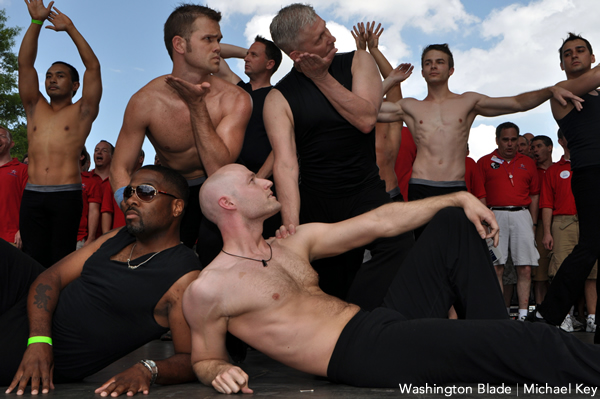
The event reached its 35th anniversary in 2010 and continued to expand its offerings with about 60 events held over a 10-day period and a record high of 250,000 attending the street festival. About 100,000 watched the 2013 parade.
A color guard officially sanctioned by the U.S. Armed Forces joined the 2014 parade, an unprecedented event. The eight-member guard represented each branch of the U.S. armed forces.

Numbers remained strong for the 2014 parade with about 100,000 again at the parade and about 250,000 estimated in total for the various week-long events. Rita Ora, Karmin, Bonnie McKee, Betty Who and DJ Cassidy performed. The theme was “#BuildOurBrightFuture.” Former Minnesota Vikings player Chris Kluwe, an ally, was grand marshal.
The Blade reported more than 150,000 attended the 40th anniversary parade in 2015. A shirtless Wilson Cruz was grand marshal. The Boy Scouts marched for the first time. About 250,000 attended the festival the following day. Musical headliners at the festival grew in stature as Hot 99.5 became the presenter. Carly Rae Jepsen, Wilson Phillips, Amber, En Vogue and Katy Tiz performed amidst ominous skies. The theme was “Flashback.”
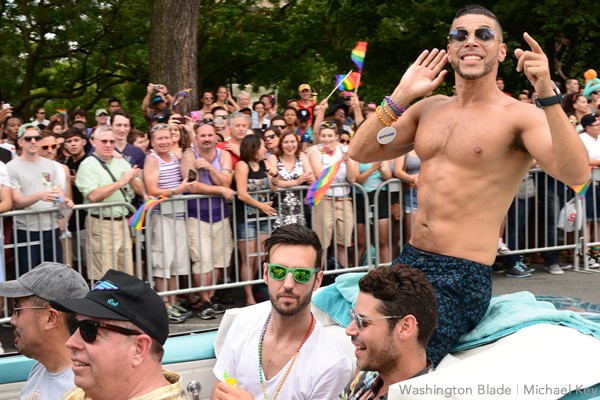
In 2016, headliners were Melanie Martinez, Alex Newell (of “Glee”), Meghan Trainor and Charlie Puth. The theme was “Make Magic Happen!” Gay actor Leslie Jordan (“Will & Grace”) was grand marshal. In 2017, the theme was “Unapologetically Proud.” Headliners were The Pointer Sisters, Tinashe and Miley Cyrus. Marriage case plaintiff Edith Windsor was grand marshal.
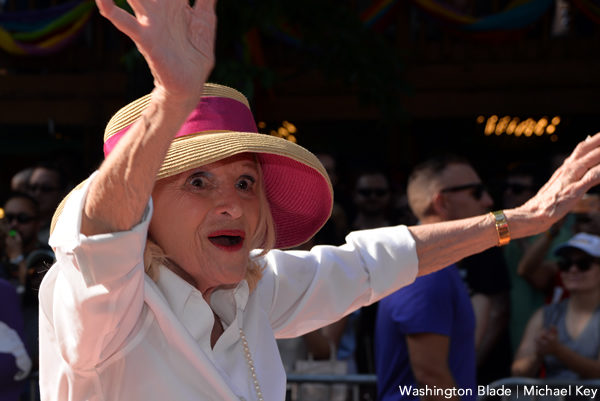
In 2018: Alessia Cara, Troye Sivan and MAX headlined. The theme was “Elements of Us.” Activist Judy Shepard (mother of hate crime victim Matthew) was grand marshal. In 2019: Shea Diamond, Todrick Hall, Zara Larsson, Marshmellow, Calum Scott and Nina West (of “RuPaul’s Drag Race”) headlined. Earline Budd, Brandon Wolf, Matt Easton and the cast of “Pose” were grand marshals. The theme was “shhhOUT: Past, Present & Proud” to honor the 50th anniversary of Stonewall.
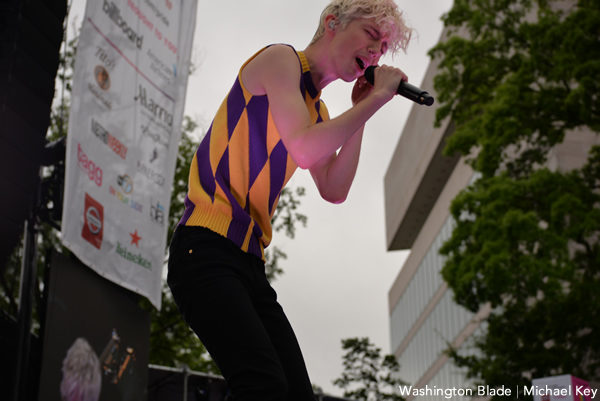
Several Pride events in recent years have been upended. A group of protesters from a local entity called No Justice No Pride blocked the parade route in 2017 forcing it to be re-routed and delayed. They objected to the lack of trans women of color in leadership positions within Capital Pride, lax vetting of corporate Pride sponsors and the presence of uniformed police officers at the parade.
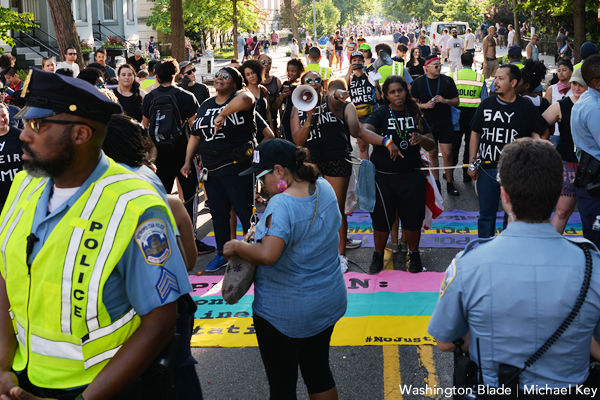
The sound of what people thought were gunshots in Dupont Circle during the 2019 parade brought the proceedings to a halt. It turned out to be a false alarm — no shots were fired. Dozens of participants didn’t get to be in the parade.
And this year the coronavirus pandemic forced organizers to concede, in an unprecedented move, that there was no responsible way to have the parade and festival. Some events were held virtually.
Editor’s note: Information taken from various sources such as previous Washington Blade articles, previous Capital Pride pride guide books, Capital Pride’s own history and more.

Some gifts scream practical, others whisper luxury, and a few flat-out blur the lines. From cocoa that feels ceremonial to a cologne that linger like a suggestive smirk, this year’s ultimate gift picks prove that thoughtful (and occasionally naughty) presents don’t have to be prosaic. Welcome to your holiday cheat sheet for festive tangibles that get noticed, remembered, and maybe even result in a peck of gratitude planted under the mistletoe. Consensually, of course.
Amber Glass Champagne Flutes
Pop the champs – but make it vintage. These tulip-shaped stunners in amber-tinted glass bring all the Gatsby vibes without the Jazz-age drama. Whether you’re toasting a milestone or celebrating a Tuesday, their seven-ounce capacities and hand-wash-only care make ‘em as practical as they are pretty. Pair with a thoughtful bottle of bubs and gift with a glittering wink. $18, NantucketLooms.com
Disaster Playbook by Here Comes the Apocalypse
Because the end of the world shouldn’t be a solo act, this spiral-bound guide is your step-by-step roadmap to surviving and thriving when everything else goes sideways, which might be sooner than you think. Packed with checklists, drills, and a healthy dose of humor, it’s like a survival manual written by your most prepared (and slightly snarky) friend. Whether you’re prepping for a zombie apocalypse or, more realistically, REVOLUTION!, this playbook’s got your back. $40, HereComesTheApocalypse.com
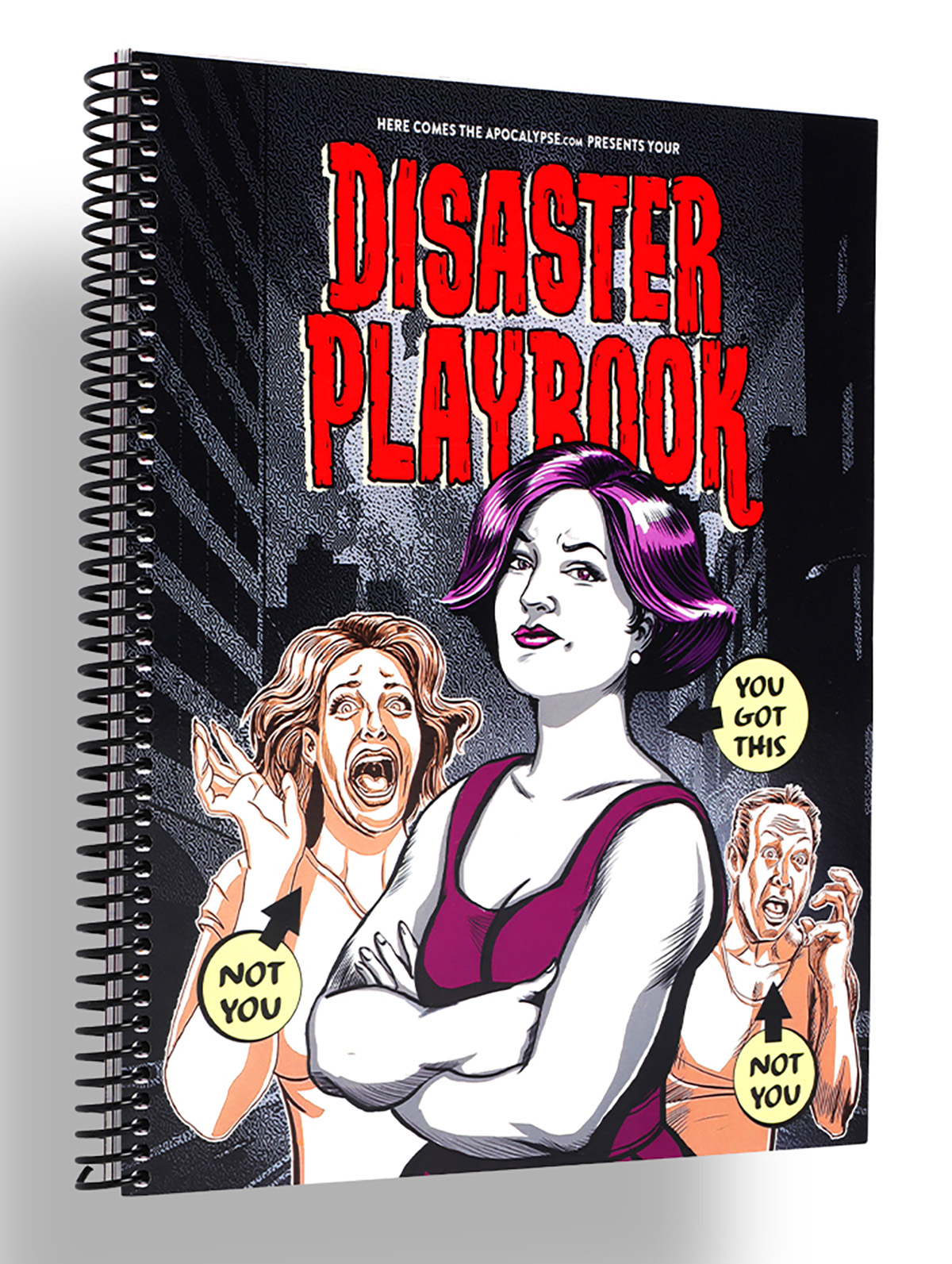
Wickless Vulva Candles
Bold, luxurious, and completely flame-free, CTOAN’s wickless candles melt from beneath on a warmer, releasing subtle, sophisticated fragrances, like sandalwood or lavender. The vulva-shaped wax adds a playful, provocative element to any space –perfect for a bedroom, living room, or anywhere you want elegance with an edge. A gift that celebrates form, intimacy and self-expression, no fire required. $39, CTOANCO.com
Villeroy & Boch Royal Classic Christmas Collection
Every meal is a mini celebration – with whimsy at every place setting – in Villeroy & Boch’s Royal Classic festive dinnerware collection that hits all the right notes. Made from premium German porcelain, it features nostalgic little toys, nutcrackers, and rocking horses in delicate relief, giving your holiday spread a playful but refined twist. Dishwasher- and microwave-safe, it’s luxe without the fuss. Gift a piece to a special someone, or start a collection they’ll use (and show off) for years to come. $22-$363, Villeroy-Boch.com
Greenworks Electric Lawnmower
You a ’hood queen who considers lawn care performance art – or just wants to rule the cul-de-sac in quiet, emission-free glory? Greenworks’ zero-turn electric mower has the muscle of a 24-horsepower gas engine but none of the fumes, drama or maintenance. Six 60V batteries and a 42-inch deck mean you can mow up to two-and-a-half acres on a single charge – then plug in, recharge, and ride again. It’s whisper-quiet, slope-ready, and smooth enough to make you wonder why you ever pushed anything besides your queer agenda. The perfect gift for the homeowner who loves sustainability, symmetry, and showing off their freshly striped yard like that fresh fade you get on Fridays. $5,000, GreenworksTools.com
Molekule Air Purifier
For the friend who treats their space like a sanctuary (or just can’t stand sneezes), the Molekule Air Pro is magic in motion. Covering up to 1,000 square feet, it doesn’t just capture allergens, VOCs, and smoke – it destroys them, leaving your air feeling luxury-clean. FDA-cleared as a Class II medical device, it’s serious science disguised as modern design. Gift it to your city-dwelling, pet-loving, candle-burning friend who likes their living room as pristine as their Instagram feed. $1,015, Molekule.com
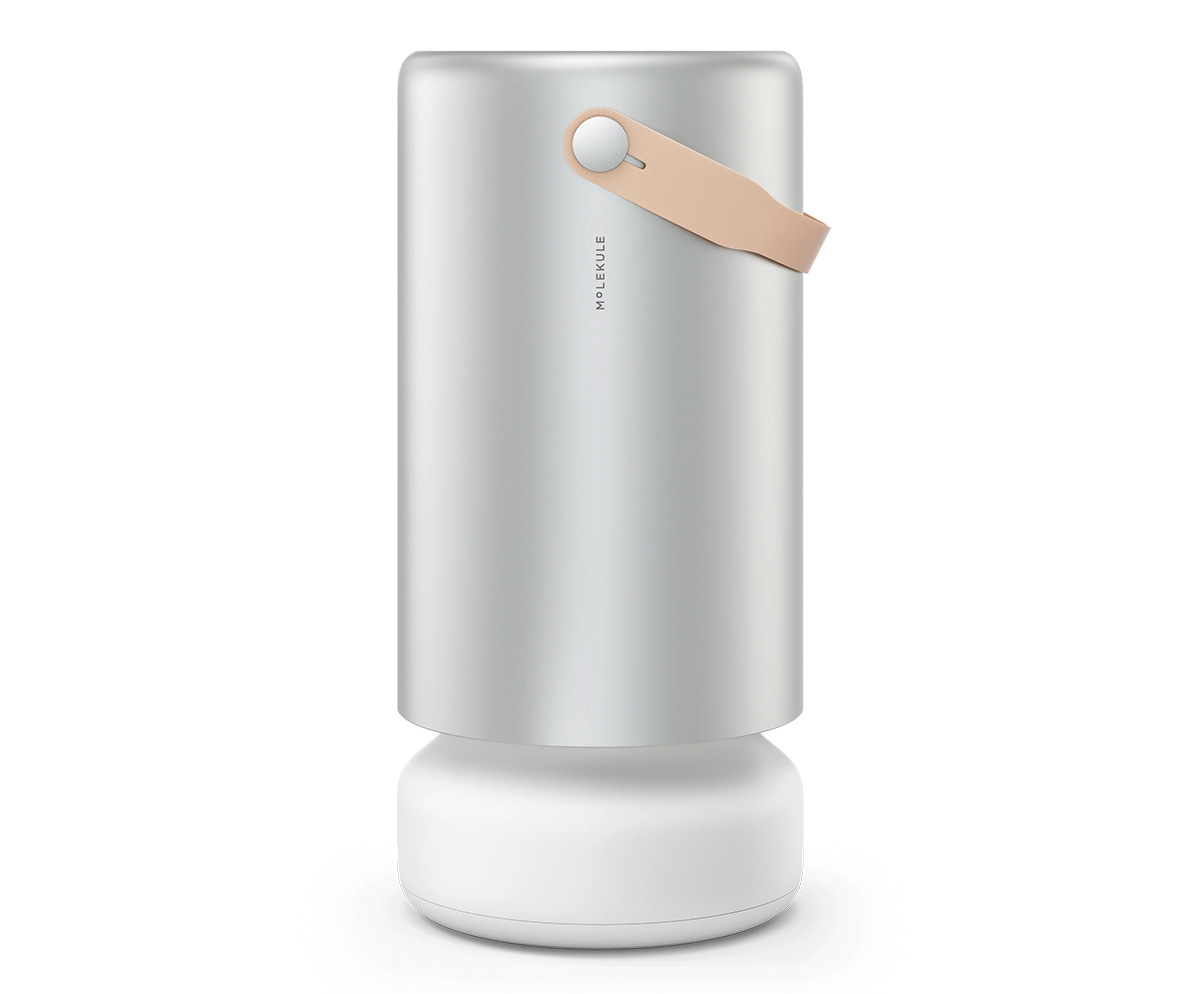
Cipriani Prosecco Gift Set
Effervescent with stone-fruit sweetness and a touch of Italian flair, the Cipriani Bellini & Prosecco gift set brings brunch-level glamour to any day of the week. The Bellini blends rich white-peach purée with sparkling wine, while the dry ’secco keeps things crisp and celebratory. Pop a bottle, pour a flute, and suddenly winter weeknights feel like a party – even with your pants off. $36, TotalWine.com
Woo(e)d Cologne
British GQ recently crowned Woo(e)d by ALTAIA the “Best Date Night Fragrance,” and honestly, they nailed it. Confident without being cocky – smoky gaïac and Atlas cedarwood grounds the room while supple leather and spicy cardamom do all the flirting – it’s a scent that lingers like good conversation and soft candlelight. Gift it to the one who always turns heads – or keep it for yourself and let them come to (and then on) you. $255, BeautyHabit.com

Lococo Cocoa Kit
Keep the run-of-the-mill mugs in the cabinet this Christmas and pull out Lococo’s handcrafted Oaxacan versions that demand you slow down and sip like it matters. Paired with a wooden scoop, rechargeable frother, and Lococo’s signature spice hot-chocolate blend (vegan, gluten-free, with adaptogenic mushrooms), this holiday kit turns Mexi-cocoa into a mini ritual you’ll look forward to. Perfect for anyone who loves a little indulgence with a side of ¡A huevo! energy.
Manta Sleep Mask
Total blackout, zero pressure on the eyes, and Bluetooth speakers built right into the straps, this ain’t your mama’s sleep mask — but it could be. The Manta SOUND sleep mask features C-shaped eye cups that block every hint of light while ultra-thin speakers deliver your favorite white noise, meditation, or late-night playlist straight to your ears. With 24-hour battery life, breathable fabric, and easy-to-adjust sound, it turns any bed (or airplane seat) into a five-star sleep suite. Perfect for anyone who treats shut-eye like an art form (or just wants to escape their roommate’s late-night bingin’ and/or bangin’). $159, MantaSleep.com

Shacklelock Necklace
Turn the industrial-chic vibe of a shackle into a sleek statement. Mi Tesoro’s platinum-plated stainless-steel necklace sits on an 18-inch wheat chain, featuring a shackle-style latch pendant that’s waterproof, tarnish-free, and totally fuss-les. Beyond style, it nods to a classic gesture in the queer leather community: replacing a traditional Master lock with something elegant to quietly signal belonging to someone special. Wear it solo for a minimalist edge or layer it like you mean it; either way this piece locks in both your look and your intentions. $90, MiTesoroJewelry.com
Parkside Flask Mojave Edition
Wine nights get a desert glow-up with Parkside’s limited-edition 750-milliliter all-in-one flask draped in sun-washed bronze and badland hues like sage, sand, and terracotta – with magnetic stemless tumblers that snap on for effortless shareability. It keeps your vino chilled for 24 hours, pours without drips (no tears for spilled rosé, please), and even lets you laser-engrave your own mantra or inside joke. Perfect for picnics, surprise rooftop clinks, or gifting to your favorite wine (or desert) rat. $149, HighCampFlasks.com

Mikey Rox is an award-winning journalist and LGBT lifestyle expert whose work has published in more than 100 outlets across the world. Connect with him on Instagram @mikeyroxtravels.
a&e features
Meet Mr. Christmas
Hallmark’s Jonathan Bennett on telling gay love stories for mainstream audiences
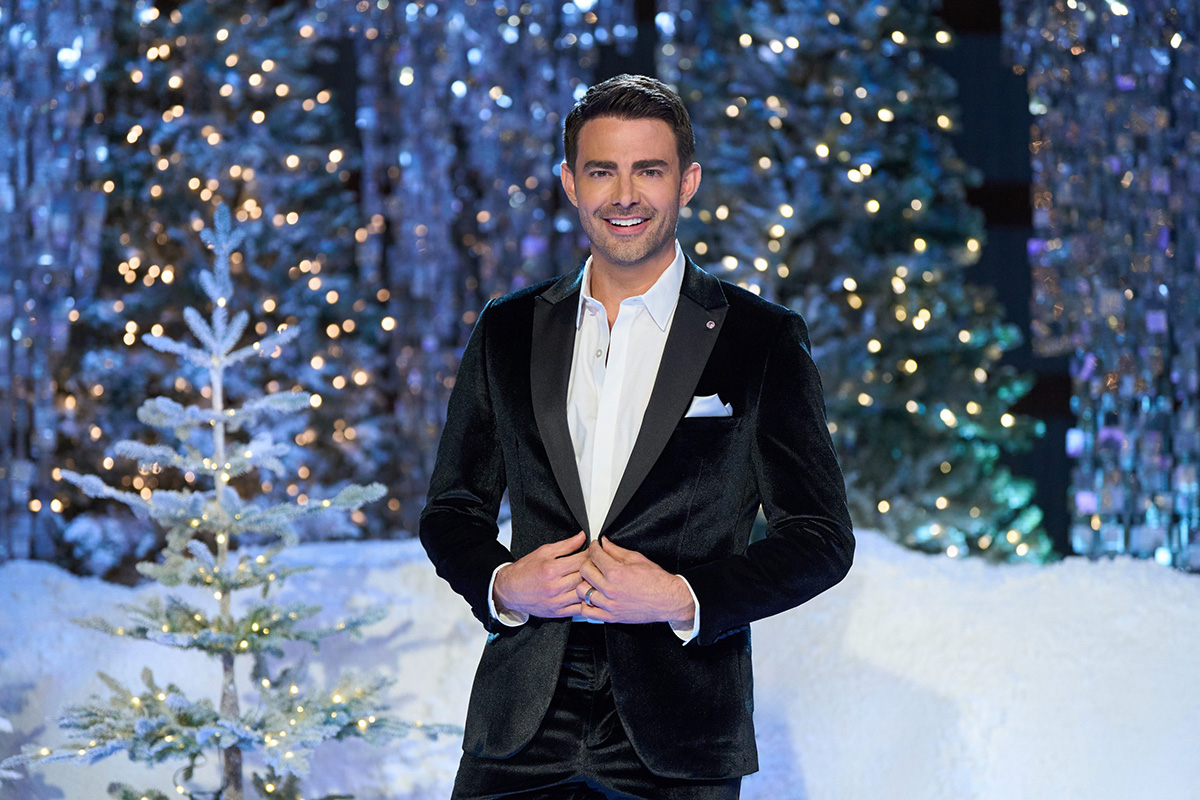
Jonathan Bennett believes there are two kinds of people in the world — those who love Hallmark movies and liars. And in Season 2 of Finding Mr. Christmas, which the Mean Girls star co-created with Ben Roy, Bennett is searching for Hallmark’s next leading man.
“It’s so fun for people because everyone in their life has someone they know that they think should be in Hallmark movies, right? The UPS driver, the barista at the coffee shop, the dentist,” Bennett says. “So we’re testing their acting abilities, we’re testing who they are, but we’re also looking for that star quality — the thing that makes them shine above everyone else. It’s almost something you can’t explain, but we know it when we see it.”
Season 2’s cast includes a former NFL player for the Green Bay Packers, a few actors, and a realtor. The 10 men compete in weekly festive-themed acting challenges, one of which included having to ride a horse and act out a scene with Alison Sweeney. The contestants were chosen from a crop of 360 potential men, and Bennett gives kudos to the show’s Emmy-nominated casting director, Lindsay Liles (The Bachelor, Bachelor in Paradise).
“She has a tough job because she has to find 10 guys that are going to be good reality television, but also have the talent to act, carry a scene, and lead a Hallmark movie eventually,” he says. To be the right fit for a Hallmark leading man, Bennett singles out five key characteristics: you have to be funny, charming, kind, have a sense of humor, and you have to do it all with a big heart.
Of course, Finding Mr. Christmas wouldn’t be Finding Mr. Christmas without its signature eye candy — something Bennett describes as “part of the job” for the contestants. “I can’t believe Hallmark let me get away with this. I dressed them as sexy reindeer and put them in harnesses attached to a cable 30 feet in the air, and they had to do a sexy reindeer photo shoot challenge,” he says with a laugh. “This season is just bigger and bolder than last. People are responding to not only all the craziness that we put them through, but also comparing and contrasting the guys in their acting scenes when we do them back-to-back.”
Season 1 winner Ezra Moreland’s career has been an early testament to the show’s success at finding rising talent. On seeing the show’s first winner flourish, Bennett says, “Now to watch him out in the world, just booking commercial after commercial and shining as an actor and a model, I think the show gave him the wings to do that. He learned so much about himself, and he took all that into his future auditions and casting. He just works nonstop. I’ve never seen an actor book more commercials and modeling gigs in my life.”
Bennett has been a star of plenty of Hallmark movies himself, including the GLAAD-award-winning The Groomsmen: Second Chances, which makes him a fitting host. Among those movies are 2020’s Christmas House, which featured the first same-sex kiss on the network and had a major impact on Bennett’s career as an openly gay man. “Hallmark’s been so great about supporting me in queer storytelling. But again, I don’t make gay movies for gay audiences. I make gay love stories for a broad audience, and that’s a huge difference, right? We’re not telling stories inside baseball that only the gay community will understand.”
He continues, “The backdrop of a Hallmark Christmas movie is very familiar to these people who watch. And so when you tell a gay love story, and you tell it no differently than a straight love story in that space, they’re able to understand. It’s able to change hearts and minds for people who might not have it in their lives.”
While Hallmark has become a major staple of Bennett’s career, he started off wanting to be a Broadway actor. And before the first season of Finding Mr. Christmas aired, Bennett took a break from TV to make his Broadway debut in Spamalot, replacing Michael Urie as Sir Robin and starring alongside Ethan Slater and Alex Brightman.
“That was my dream since I was five years old – then I booked a movie called Mean Girls, and everything kind of changes in your life. You no longer become a person pursuing Broadway, you become a part of pop culture,” Bennett recalls. “And to be honest, when I hit 40, I was like, ‘I’m probably never going to get to live that dream.’ And that’s okay, because I got to do other dreams and other things that were just as cool but different. So I honestly never thought it would happen.”
Bennett is still determined to make his way back on Broadway with the right role — he calls Spamalot the “best experience” of his life, after all — but he’s got another Hallmark show lined up with Murder Mystery House, which he co-created. The show was recently greenlit for development and intends to bring the Hallmark mystery movie to life. “It’s kind of like our version of The Traitors,” Bennett admits.
Looking back on both seasons, Bennett says that what makes Finding Mr. Christmas stand out in the overcrowded reality TV landscape is that everyone involved makes it with heart: “This isn’t a show where you’re going to watch people throw drinks in each other’s faces and get into big fights. The thing that has amazed me so much about this show, the more we’ve done it, is that every season, 10 guys come in as competitors, but they leave as a family and as brothers. That’s something you don’t get on any other network.”
Finding Mr. Christmas airs every Monday on Hallmark through December 20, with episodes available to stream on Hallmark+.
a&e features
Guillermo Diaz on his role as a queer, Latino actor in Hollywood
Shattering stereotypes and norms with long resume of roles
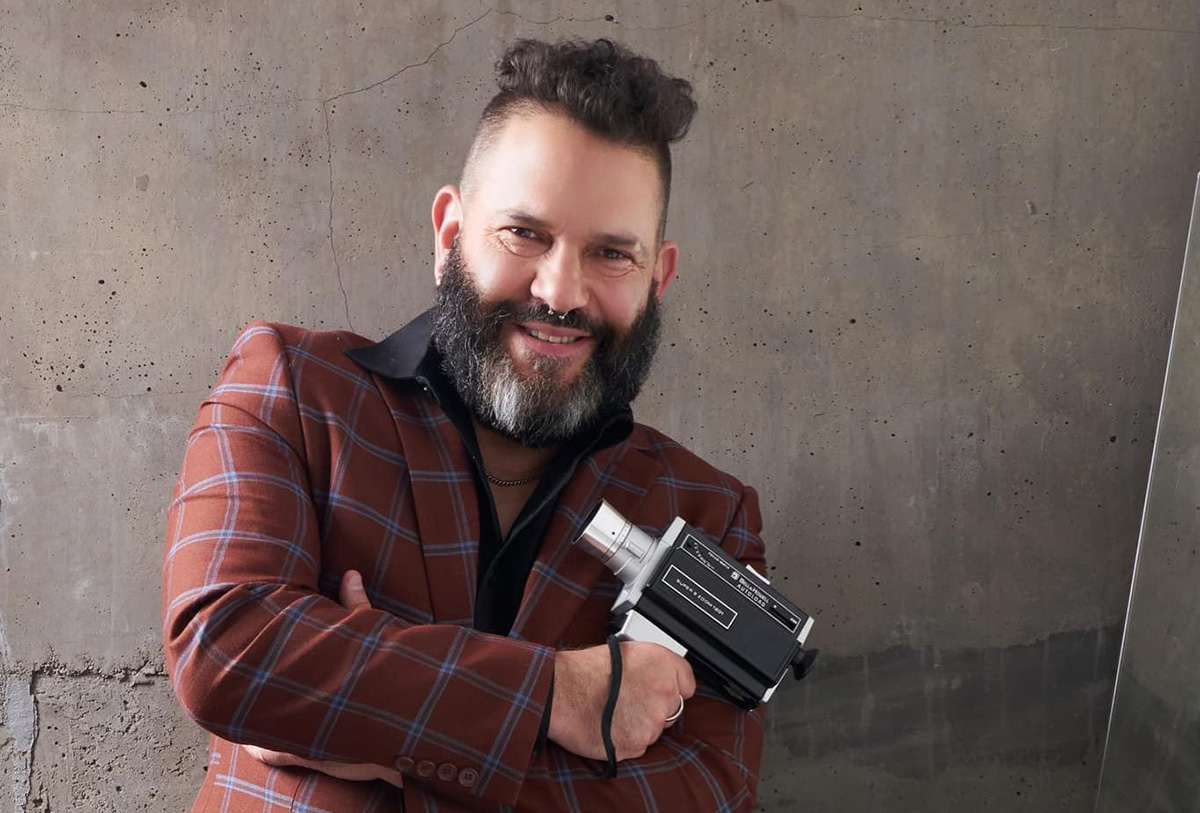
Actor Guillermo Diaz has been working hard in the entertainment industry for more than three decades. Proud of his heritage and queer identity, he has broken through many glass ceilings to have a prolific career that includes tentpole moments such as roles in the films Party Girl, Half Baked, and Bros, and in major TV shows like Weeds and Scandal, and even in a Britney Spears music video. This season, he made his feature-length directorial debut with the film Dear Luke, Love Me.
In an intimate sit-down with the Blade, Diaz shares that he attributes a lot of his success to his Cuban upbringing.
“Well, it prepared me to learn how to lie really well and be a good actor because it was a lot of acting like you were straight, back in the eighties and nineties (laugh). Another thing I learned from my Cuban immigrant parents is that they work super hard. They both had two jobs; we were latchkey kids, and I just saw them constantly working and wanting to provide for us by any means. So that was super instilled in me. That was the one thing that really stuck out that I admire and respect.”
Besides Diaz’s recurring roles on TV, his resume includes appearances in just about every genre of programming out there. If there is a major show out there, he was probably on it. Law and Order, Girls, The Closer, Chappelle’s Show, ER, Party of Five, and the list goes on. He’s accomplished more in his career thus far than most actors do in a lifetime. There is no doubt he is a hard worker.
“It’s a sign that I just loved to work, and it’s funny looking back at it now because you see all those things, but at the time it was just the next gig, the next job. I was just wanting to keep working and acting and learning and doing all that stuff. Then it sort of accumulates, and you look back and you’re like, damn! That’s a lot of stuff!”
Acting was never on Diaz’s radar until he was asked to fill in for a friend in a Beastie Boys medley for a talent show when he was a sophomore in high school.
“I did it and fell in love with it. I was teased a lot in high school. Then, when I did that performance, all those people who teased me were like, you were so great! So I looked at it initially as a thing of like, oh, this is where I’m accepted and people like me when I’m on stage. It’s kind of sad, too, because that’s what I latched onto. And then of course, I fell in love with the craft and performing and acting, but that initial rush was because all these people who were messing with me and teasing me all of a sudden liked me. And I was like, this is what I have to do.”
Little did Diaz know that he would break the mold when it came to stereotypical casting. When he first hit the industry, diversity and positive representation were not a thing in Hollywood.
“You just kind of accepted at the time. It was the early nineties. 90% of the time, it was playing a thug or a gun dealer, or a crack head – it was all bad guys, negative characters. But it was either that or not act and not be in anything. So you just kind of accept it, and then you have this sort of vision or hope that in the future it’s going to get better.
Diaz’s management was trepidatious about him playing gay roles for fear of being typecast. But Diaz did play a handful of gay roles early on, although he passed on But I’m A Cheerleader, which went on to become a gay cult classic. Diaz decided early on that he was not going to hide his sexuality. Diaz appeared in the film Stonewall. That was the defining point for him in sharing his identity.
“Being cast in that historical sort of dramatization of the 1969 Stonewall riots – I couldn’t believe I was in the midst that I was in the middle of doing this and playing the lead drag queen on the film. I just felt so honored, and I knew it was important, and I knew I needed to do a really good job. I thought, what a special moment this is. And it kicked my ass shooting that movie.
I remember after doing Stonewall, people saying, well, now you’re either going to have to make a choice if you’re going to lie, or if you’re going to just be honest, and you’re going to have to be out from now on if you’re going to be honest. And I was like, I’m not going to freaking lie. When they’d asked me, I would say I was gay. I think because I never tried to hide it, it didn’t become a thing. So people just kind of ignored it. It didn’t mess with me or my career. I don’t know. Or I just got lucky. I don’t freaking know.”
As a queer, Latin actor, Diaz is all too aware of what is happening politically and socially in the world towards minority communities. Does he think actors have a place in politics?
“For sure. I mean, we’re people first, right? Like, I hate when people sort of are like, oh, you’re an actor, shut up. I’m super political and outspoken, and I’m that guy who will say shit. I’m on the right side of history, at least. I’m not being complicit and silent. So, yeah, I think actors for sure have a place in politics. Absolutely.”
While directing was on Diaz’s radar, it wasn’t something that he was actively searching out. But as life would have it, his friend Mallie McCown sent him her script for Dear Luke, Love Me, a film she would play the lead in. Diaz was hooked.
“It was one of those scripts that I had to keep putting down every like 20 pages. I would put it down because I didn’t want it to end. It was so good. Originally, I was just going to come on as a producer of the film, and then the director dropped out, and then Mallie asked me if I was interested in directing. I was scared as shit. I had never directed a feature film. But I was like, it’s now or never.”
The film covers a decade of the friendship between Penny and Luke, covering themes of platonic love, asexuality, co-dependence, and self-identity. With most of the film focusing on just the two leads, Diaz has crafted an intimate and raw film. What is his message with the film?
“That love is complicated, but it’s beautiful and rewarding and worth all the heartache. I believe that. I don’t want to give away too much in the film either, but I think everyone can relate to it because there’s heartache and there’s pain, and there’s beauty and there’s love.”
And in looking at his past work and in looking toward his future career, what kind of legacy does Diaz want to build?
“That I broke some ground, that I knocked down some walls as an artist; I’m hoping that made a difference. It’s funny because when you’re in it, you’re not thinking about all this stuff that could possibly pave the way for other people. You’re just kind of moving along and living your life. But yeah, I would hope that I broke down some walls as a queer Latino.
I hope that people can sort of get something out of me trying to live as authentically as I can, just being my queer self. Hopefully, that helps someone along who is having some troubles being accepted or being comfortable with who they are.”
-

 Opinions5 days ago
Opinions5 days agoVictory Fund continues to shun me and my place in LGBTQ history
-

 LGBTQ Non-Profit Organizations4 days ago
LGBTQ Non-Profit Organizations4 days agoVictory Institute honors President Biden
-

 Opinions5 days ago
Opinions5 days agoTammy Bruce, Trump’s lesbian nominee for deputy UN ambassador. Just say no!
-

 Maryland5 days ago
Maryland5 days agoFreeState Justice launches 501(c)(4) group





